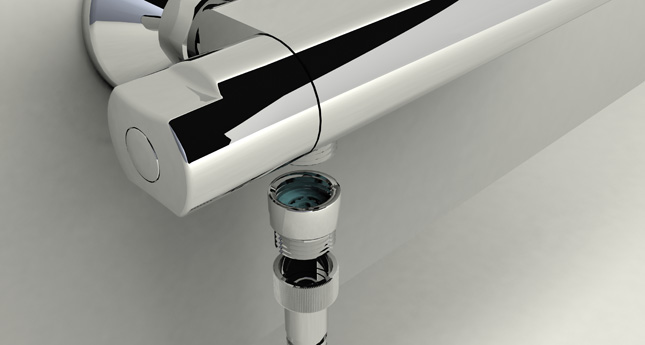

Chris Taylor, product expert at Bristan, discusses the role that installers play in helping their customers save water.
In this current eco-conscious climate, consumers are becoming increasingly aware of the impact they have on the environment and are actively making changes to offset this, such as reducing their use of water. Today, many taps and showers are supplied with optional flow regulators to reduce water consumption, but consumers are often unaware of the benefits, and the potential drawbacks, of these types of devices.
According to WaterWise data, every person in the UK uses approximately 150 litres of water a day, a figure that has been growing by one percent every year since 1930. If the additional amount of water we need to produce food and the other products we consume in our day-to-day lives (known as embedded water) is factored in, this figure grows to 3,400 litres per person, per day.
However, the reality is that this level of consumption simply isn't sustainable in the longwe term. With our global supply of fresh water limited, and the population increasing, we need to adopt a much leaner approach to water use.
One problem lies in an apparent lack of consumer awareness. Despite the arrival of the Water Label, WaterWise and other water-saving initiatives, the large majority (85%) of Brits admit that they don't know how much water they use.
Interestingly, however, a Waste and Resources Action Programme (WRAP) consumer attitudes report found that at least 83% of consumers agree water saving will become more important in the next five years. Even more crucially, 51% of those surveyed stated that they look to plumbing installers for guidance when choosing bathroom fittings.
This suggests that the traditional role of the plumber is likely to change, as it becomes increasingly important for them to provide customers with informed advice on the latest water-saving products, and to be able to explain the pros and cons involved.
It may sound obvious but, to begin with, it's important for installers to understand what it is their customers exactly want from their tap or shower. It can be all too common, for example, for people to opt for the most sustainable type of say, shower, only to realise that the reduced amount of flow means that they have to spend twice as long in it to effectively get the shampoo out of their hair - defeating the object completely.
The key then is to balance your customers' performance needs with their desire to save water. Here, a good recommendation is a shower or tap with an optional flow regulator, which works by limiting the flow inside the connection.
Typically, for example, most standard showers distribute a shower flow rate of 13.5 litres/min, while flow-regulated showers can offer a rate of 10 litres/min respectively. Equally, a standard basin tap running at mains pressure can easily deliver in excess of 12 litres/min. In comparison, flow-regulated basin taps can limit the flow rate to as little as two litres/min. And, although these options can translate to significant water savings over the year, the difference in the product performance is barely noticeable.
Another good option is a product that has an eco-setting, such as with Bristan's Artisan Evo Digital thermostatic shower. In this way, customers can have a choice when it comes to going into water saving mode; for example, you may choose an eco-setting for a quick shower, but a normal mode when washing your hair. Generally, when it comes to a basin tap, we tend to find consumers opt to use the eco-setting permanently, as most tasks don't require a high flow.
Finally, although not something that necessarily springs to mind when it comes to water saving, the toilet can be a huge water waster - in fact, according to WaterWise, 30% of the water each adult uses daily goes towards flushing toilets.
As such, advising customers to switch to a modern dual-flush option can make for some serious water savings. Typically, a traditional single flush WC will use a generous 9-12 litres per flush; whereas today's dual options use a maximum of just six litres – with some as low as 2-4 litres – and the impact to the consumer is little to none.
With awareness rising, water-saving is only going to become a bigger issue for consumers which, in turn, will place increased demand on installers to provide their customers with appropriate advice and support. With each technology having different pros and cons and suiting people of differing day-to-day lifestyles, it is vital for installers to take a considered approach and advise their customers of the benefits and drawbacks to each. In doing so, the transition to water-saving can run smoothly.
For more information on Bristan's products please visit www.bristan.com.
Chris Taylor is product expert at Bristan.
If you'd like to keep up-to-date with the latest developments in the heating and plumbing industry, why not subscribe to our weekly newsletters? Just click the button below and you can ensure all the latest industry news and new product information lands in your inbox every week.